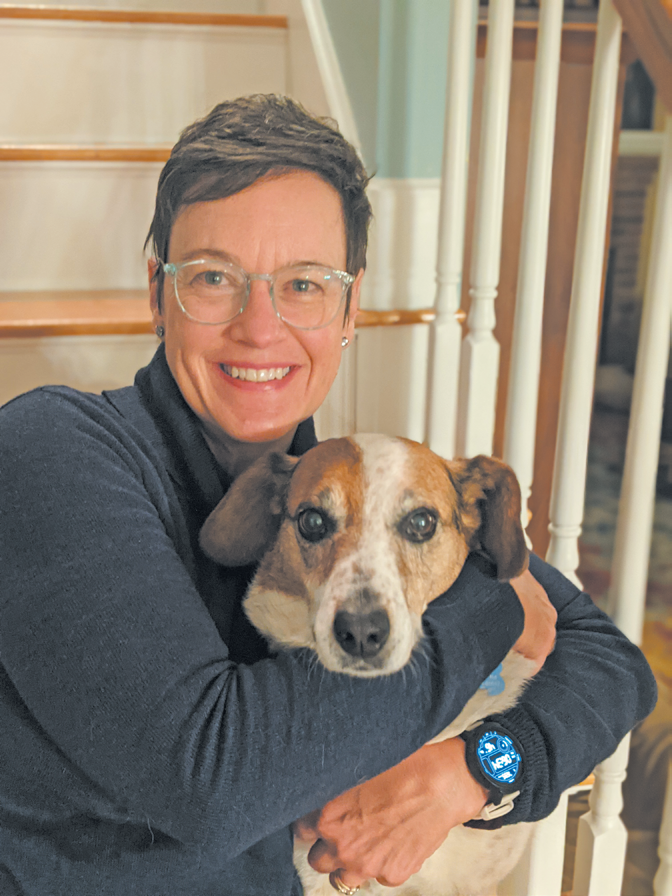As recently as a decade ago, when a dog came in with cancer that had spread, “there was often nothing we could do,” says Tufts veterinary oncologist Carrie Wood, DVM. “We just put them on palliative care.” But there are new drugs that have “definitely been game changers in the last 10 years,” Dr. Wood says. They can frequently buy a dog not only time but also significant quality of life.
Starving the tumor
One drug that has proven groundbreaking is called toceranib, which has the trade name Palladia. It comes under the category of receptor tyrosine kinase inhibitors. That’s the technical term for saying that Palladia inhibits the ability of receptors on cells that signal the cells to divide. If cancer cells stop dividing as quickly, the cancer can be stalled.
Palladia was originally used for treating only one type of cancer in dogs — mast cell tumors, which are the most common canine skin cancers. But the drug has been shown to be effective in cases of metastatic disease—cancer that has spread to tissue beyond the tissue in which it originated.
Often cancer spreads to the lungs, and that’s one site in the body where Palladia has proven particularly effective in halting tumor progression. It does its work via a number of mechanisms, not just the one that limits cell division. For instance, it blocks the proliferation of new blood vessels that feed the cancer. “By blocking new blood vessel growth, the drug can starve the tumor of its own blood supply,” Dr. Wood explains.
Palladia also has some pathways that help activate the immune system to fight the spread of cancer. “We call the result stable disease,” Dr. Wood says. “It can last anywhere from 3 months to a year. That doesn’t sound like a lot of time,” the doctor says, “but compare it to 2 to 3 weeks. It gives human family members time to adjust to the reality. It gives time to say good-bye.”
Along with slowing the growth of cancers that have spread, Palladia can directly shrink certain tumor types known as neuroendocrine tumors. These tumors arise from organs playing a part in hormone secretion. They include pancreatic cancer and thyroid cancer. “In the past, there were very limited options,” Dr. Wood says, “but Palladia works very well in these tumors.”
Old drugs, new uses
Veterinary oncologists at Tufts and elsewhere are discovering that some drugs developed to treat illnesses that have nothing to do with cancer do in fact have anti-cancer effects. “The biggest thing going on there is the repurposing of various blood pressure-lowering medications,” Dr. Wood says. One of them is called propanolol. A beta-blocker, it lowers blood pressure by causing the heart to beat less forcefully, which lowers the pressure of blood as it courses along the arteries while journeying through the body. But what researchers have found, in addition, is that certain types of cancers called sarcomas have beta receptors that drive their growth, and stopping the action of those receptors with a beta-blocker like propanolol inhibits them.
One sarcoma that can be treated with beta blockers is hemangiosarcoma, or cancer of the blood vessels. “In the past, once it had metastasized, it was, ‘Sorry, we can’t do anything, your dog has weeks to live,’” Dr. Wood relates. Now, by combining propranolol with chemotherapy, a dog can be bought a good 3 to 4 months’ time. “It’s no longer a sudden, catastrophic diagnosis,” Dr. Wood says.
“Dogs who have this disease are fine one day and then have a terrible internal bleeding episode the next, after which the tumor is found and the grim prognosis is given,” the doctor says. “Now, even after a bleeding episode, the process can be slowed.”
How to think about the new information
With more possibilities now in the cancer-fighting arsenal, there are more treatments to choose from. “It’s always about treatment options,” Dr. Wood says. “We encourage people to have a consultation either with their primary care vet or, if possible, with an oncologist.” Sometimes there are many different things you can do, and you have to make the best choice based on lifestyle [some treatments require multiple veterinary visits] and cost constraints.
It’s not cheap to treat a dog for cancer with some of the newer drugs available, but for some people it won’t completely break the bank, either. For a dog the size of a golden retriever receiving propranolol plus chemotherapy, it may run about $1,000 a month.
For Palladia plus chemo, it might cost $600 a month.
These costs are not just for the drugs themselves but also for blood work and other screenings. A family might be able to budget for a certain number of months.





